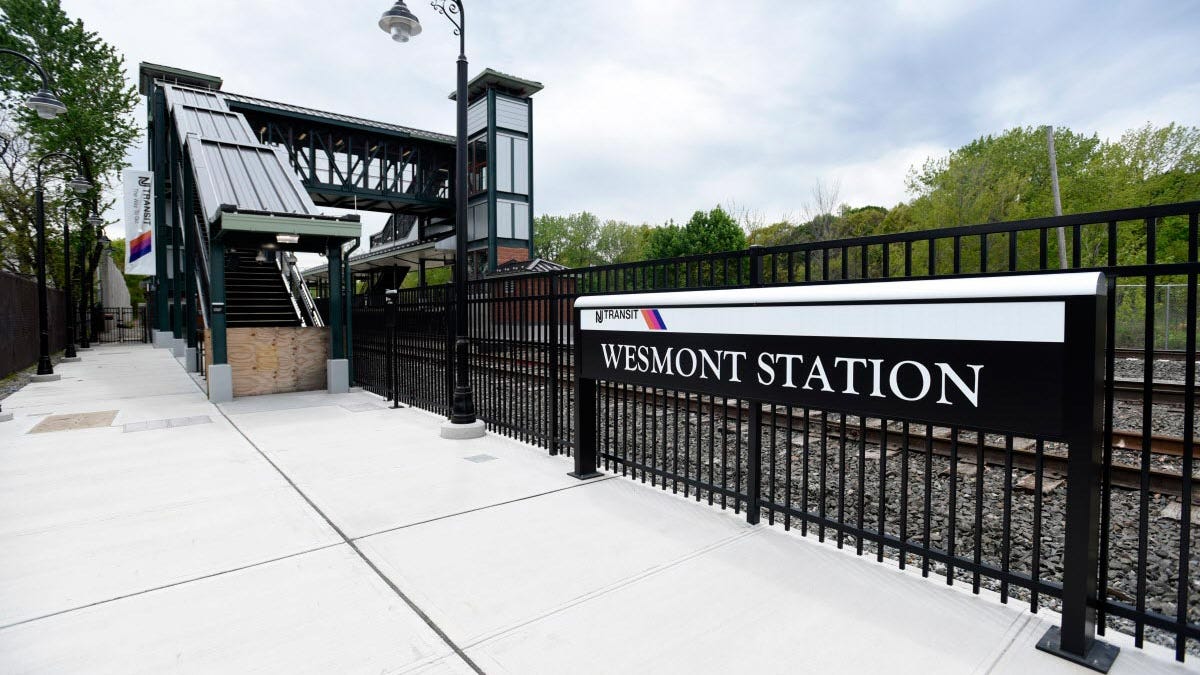
the staff of the Ridgewood blog
WOOD-RIDGE, NJ — Once the site of a 138-acre aircraft engine assembly plant owned by Curtiss-Wright Corp, the land now surrounding the Wesmont Train Station has been transformed into one of Bergen County’s most ambitious redevelopment success stories. With state funding totaling $47.5 million, a new NJ Transit stop, and thriving residential, recreational, and educational amenities, the borough of Wood-Ridge has reinvented itself—though not without controversy.
Wesmont Station: From Toxic Factory to Transit-Oriented Community
The Wesmont redevelopment zone is a textbook case of New Jersey’s evolving approach to smart growth and transit-oriented development. In place of a contaminated and abandoned aircraft factory now sits a vibrant $500+ million mixed-use community with:
-
A new NJ Transit station (opened in 2016)
-
700+ townhomes and apartments
-
Playgrounds, parks, and athletic fields
-
A newly constructed school
-
Commercial and retail spaces
According to borough administrator and state Sen. Paul Sarlo’s chief of staff, Christopher Eilert, the redevelopment effort was necessary to save Wood-Ridge from financial collapse.
“Curtiss-Wright from the 1970s through the 1990s basically bankrupted Wood-Ridge,” said Eilert. “This redevelopment was our chance to resurrect the town and become financially independent.”
$47.5 Million in State Aid Sparks Scrutiny
Buried in New Jersey’s annual budgets since 2021 has been a line item titled “Repayment of Municipal Contribution to Mass Transit Facility.” While it sounds bureaucratic, this line has quietly funneled $47.5 million in taxpayer funds to Wood-Ridge — with another $10 million proposed for FY 2026.
The stated purpose? To repay the borough for the $8 million bond it issued to help build the Wesmont Train Station.
But here’s the twist: That bond was already fully repaid by Wood-Ridge Development, LLC in 2022 — the private developer that partnered with NJ Transit on the project.
So why the continued funding?
“The state grants pay for the borough’s contribution to the amenities,” Eilert explained, “including the train station, school, athletic fields, parks, and playgrounds. It’s all connected.”
Transparency and Budget Politics
Senator Sarlo, also the Senate Budget Committee chairman, has played a central role in securing the funds — though the line item doesn’t explicitly name Wood-Ridge or Wesmont Station.
Critics argue this lack of transparency makes it difficult to determine exactly how funds are used, while budget watchdogs question the scope of Sarlo’s influence in a year when Gov. Phil Murphy is pushing deep cuts and tax hikes to close budget gaps.
“When you’re building schools and paving roads, that’s not pork,” said Eilert, pushing back on accusations of favoritism.
Political scientists like Dan Cassino note that in difficult budget years, so-called “pork” projects often proliferate to win legislative support.
“You have two outcomes: nobody gets anything, or everybody gets something,” said Cassino. “It’s a hell of a lot easier to pay people off.”
The Long Journey of Wesmont Station
-
1955–1980: Curtiss-Wright operated one of the nation’s largest aircraft engine factories, employing up to 18,000 people.
-
2001: Curtiss-Wright sold the contaminated property, kicking off years of litigation and lost tax revenue for the borough.
-
2005–2008: Wood-Ridge and Wood-Ridge Development finalized plans to create a new community anchored by a train station.
-
2016: Wesmont Station opens to the public with contributions from NJ Transit, federal grants, and local developers.
-
2022: Developer repays the bond to the borough.
-
2021–2025: State grants totaling $47.5M are awarded for redevelopment-related expenses.
Why Wesmont Matters
The Wesmont redevelopment isn’t just a local transformation — it represents New Jersey’s challenge of turning brownfields into livable communities. With transit-oriented housing, walkable neighborhoods, and environmental remediation, Wood-Ridge has become a model, albeit a complex one.
With daily ridership of 266 passengers (down from pre-pandemic highs), Wesmont Station has exceeded NJ Transit’s early projections, while the surrounding housing continues to boost the borough’s tax base.
“We’ve produced over $500 million in value from land once worth $19 million,” said Eilert. “Until these grants came in, we did it almost entirely without state support.”
Tell your story #TheRidgewoodblog , #Indpendentnews, #information, #advertise, #guestpost, #affiliatemarketing,#NorthJersey, #NJ , #News, #localnews, #bergencounty, #sponsoredpost, #SponsoredContent, #contentplacement , #linkplacement, Email: Onlyonesmallvoice@gmail.com
